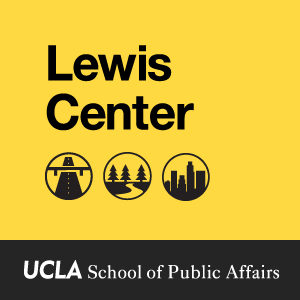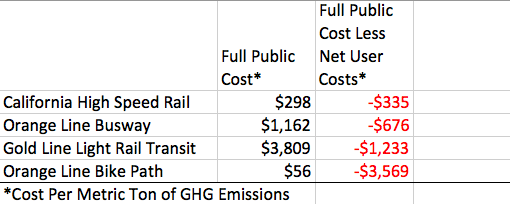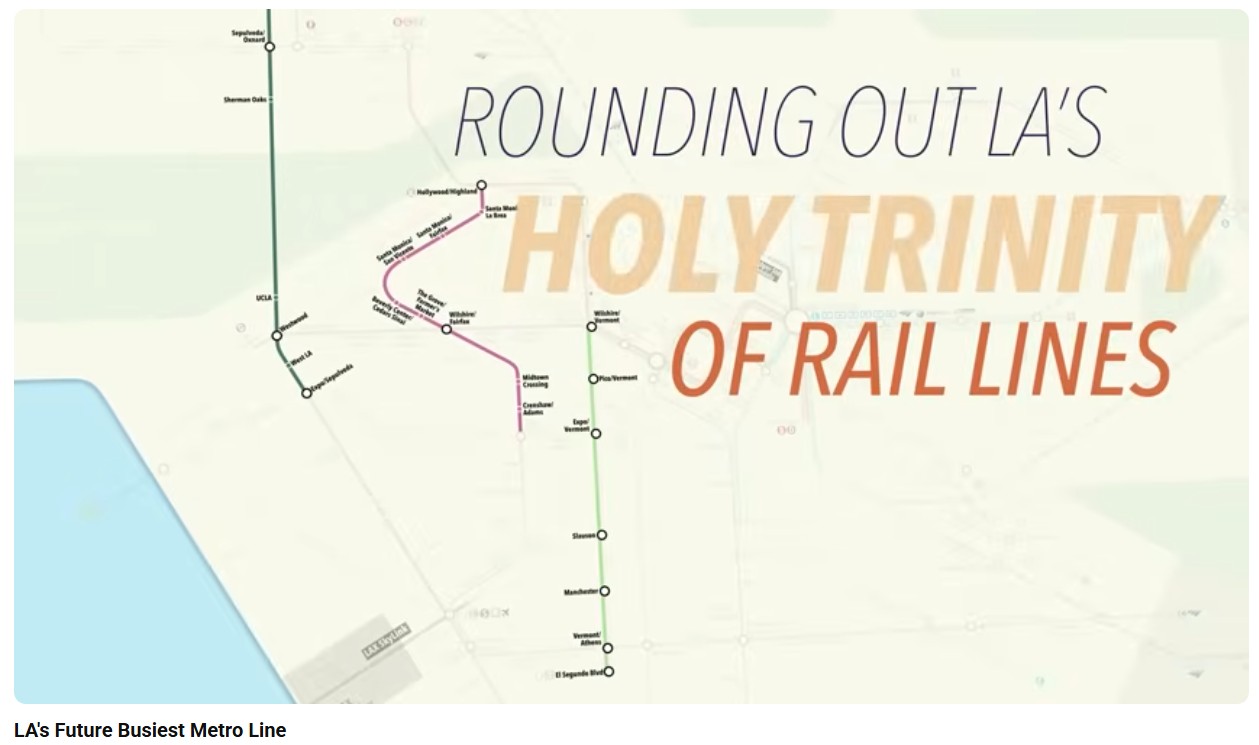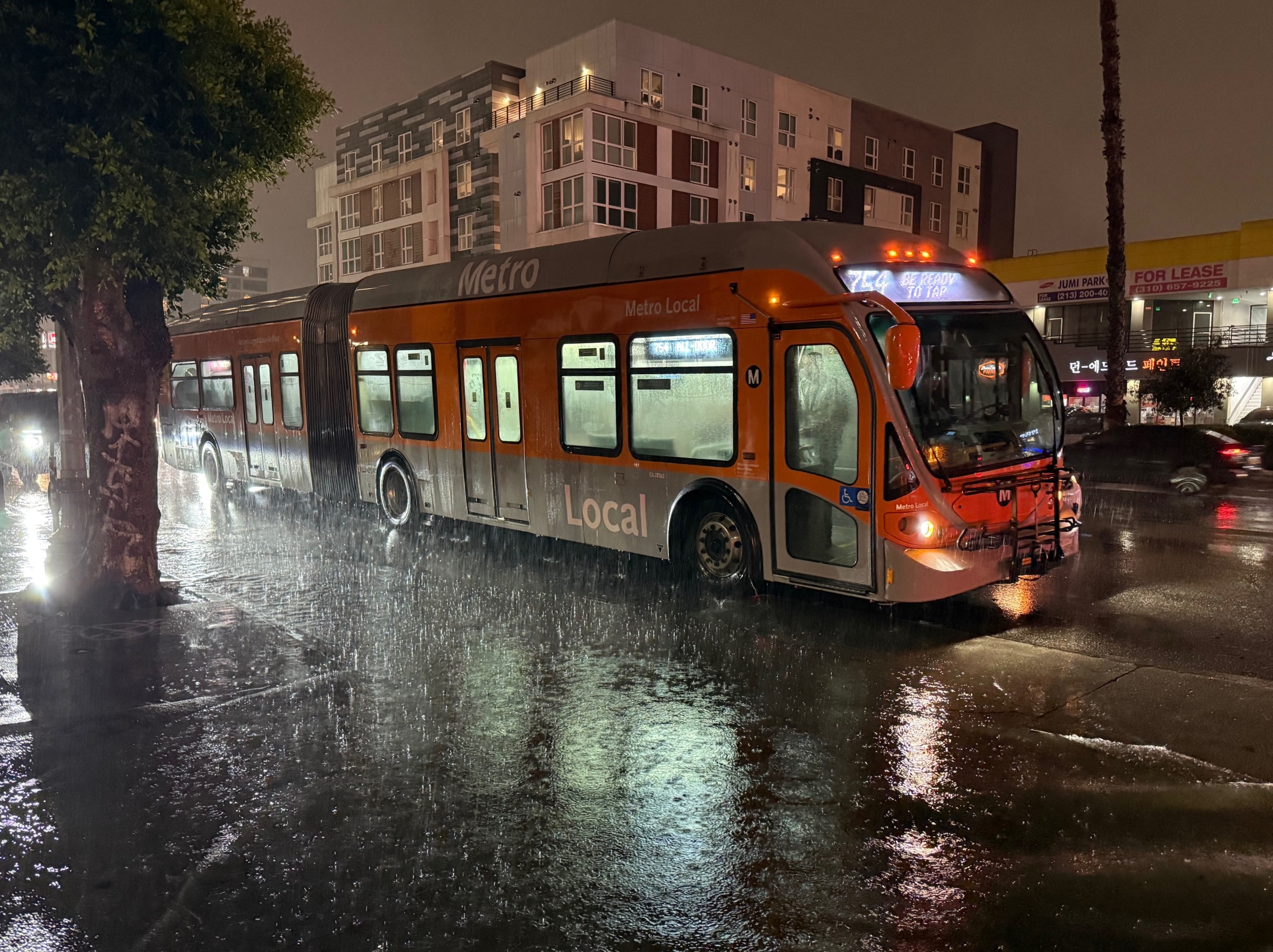UCLA's Lewis Center revised some of the estimates in its recent report comparing the costs of reducing greenhouse gas (GHG) emissions using California high-speed rail to those of bike, pedestrian, and local transit projects. The report's authors found that high-speed rail is not as expensive as an emission reduction as they first thought.
The update makes several adjustments to the analysis, which compared CAHSR to Los Angeles Metro's Gold Line light rail and the Orange Line bus rapid transit route, as well as the bikeway that runs parallel to it. Originally, the report found high-speed rail to be a much less cost-effective way to reduce GHGs than any of the three urban transit options. While the new cost-benefit analysis for high-speed rail looks much better, it's still not quite on par with local transit investments.
The new comparison of costs among high-speed rail, light rail, bus rapid transit, and the bikeway is shown in the table below. As discussed in our previous story on this report, the authors consider anything less than the current price of a metric tonne of emissions under the cap-and-trade system (about $11) a cost-effective way to reduce greenhouse gas emissions. The lower the cost, the greater the cost-effectiveness.
The new estimate for CAHSR is -$335 per metric tonne, compared to the previous $361. Those estimates are the full public cost plus user savings (in the case of high-speed rail, that's the price of a ticket compared to the cost of driving or flying). However, the bus rapid transit, light-rail, and bikeway are still more cost-effective at -$676, $1,233, and $3,569, respectively.
Here's why the numbers changed:
- The new analysis restates all costs in 2012 dollars, rather than year-of-expenditure values, as was done in the first analysis. This allows a simpler comparison of costs from year to year.
- The new estimated capital costs to the public were lowered after CAHSR Authority's 2012 Business Plan estimates of $9 billion in private capital and revenue from operations were incorporated.
- The report now derives the average expected ticket price from expected revenues and annual passengers rather than using CAHSRA's stated average fare, which applied only to trips between San Francisco and Los Angeles. These long-haul trips are only expected to make up roughly 1/3 of all high-speed rail trips.
The real story here may not be known until a completely new analysis incorporates estimates from CAHSRA's 2014 Business Plan, which projects fewer people will shift from planes to trains and more will shift from cars to trains, with shorter trips comprising a greater share of the trips affected.








